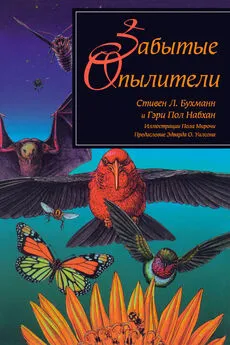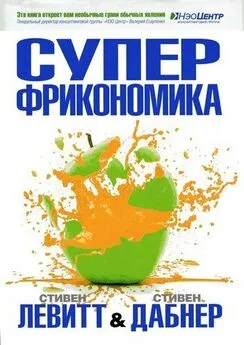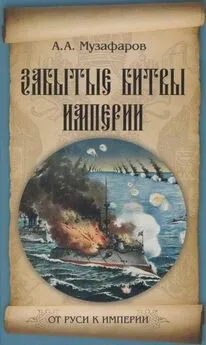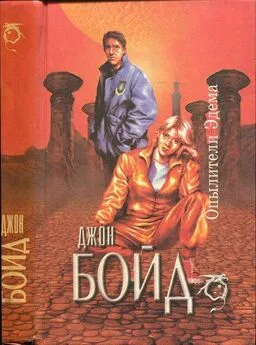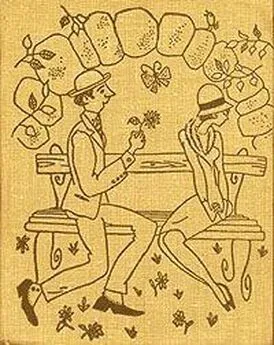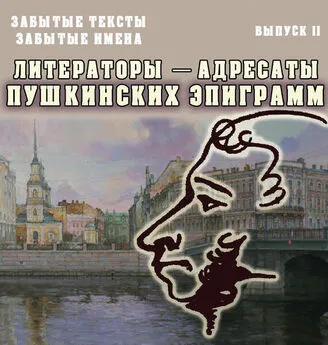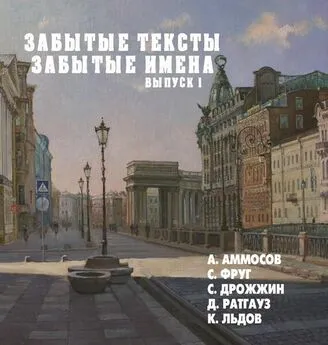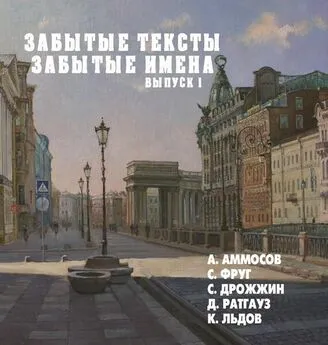Стивен Бухманн - Забытые опылители
- Название:Забытые опылители
- Автор:
- Жанр:
- Издательство:Island Press
- Год:1997
- Город:Washington D. C.
- ISBN:9781597269087
- Рейтинг:
- Избранное:Добавить в избранное
-
Отзывы:
-
Ваша оценка:
Стивен Бухманн - Забытые опылители краткое содержание
Один из авторов книги, Стивен Бухманн, является одним из ведущих мировых специалистов в области опыления и знатоком медоносных пчёл. Второй автор, Гэри Пол Набхан — специалист по этноботанике, эколог, автор множества книг о культуре земледелия и сельскохозяйственных продуктах.
Забытые опылители - читать онлайн бесплатно полную версию (весь текст целиком)
Интервал:
Закладка:
Но когда они провели мониторинг посещений пчёлами садовых разновидностей тыкв на различном расстоянии от остаточных лесных местностей, посещаемость пчёлами цветков тыкв сниалась по мере удаления от природной растительности. Смысл послания очевиден: поля и сады, на которых лежит нагрузка по снабжению нас пищей, никогда не должны располагаться слишком далеко от природных территорий, или тогда пострадают их урожаи. Сохраняющиеся природные территории и животные, их населяющие, играют всё более и более важную роль в поддержании стабильности снабжения всего мира продовольствием, волокнами и напитками. Мы не можем позволить дикой природе слишком сильно отдалиться от жизней опылителей, или от наших собственных жизней. Риск слишком велик — возможно, даже больше, чем гора мусора на свалке Фреш Киллс.
Библиография
Acosta-Ruiz, G., B. G. Carey, M.-A. Gonzalez, M. Gregory, B. Henson, and U. Navarro. 1994. Border-Right-to-Know Project: The 1993 Northeastern Sonoran Pilot Inventories. Bisbee: Arizona Toxics Information.
Adey, M., P. Walker, and P. T. Walker. 1986. Pest Control Safe for Bees: A Manual and Directory for the Tropics and Subtropics. London: International Bee Research Association.
Aizen, M. A. 1994. “Habitat fragmentation, native insect pollinators, and feral honey bees in Argentine ‘Chaco Serrano.’” Ecological Applications 4(2):378–392.
Aizen, M. A., and P. Feinsinger. 1994. “Forest fragmentation, pollination, and plant reproduction in a Chaco Dry Forest, Argentina.” Ecology 75(2):330–351.
Ajilvsgi, G. 1990. Butterfly Gardening for the South. Dallas: Taylor Publishing.
Alarcon, F. X. 1992. Snake Poems. San Francisco: Chronicle Books.
Allee, W. C. 1949. “Group survival value for Philodina roseola, a rotifer.” Ecology 30:395–397.
Anderson, E. 1995. Personal communication to Gary Paul Nabhan regarding Galapagos prickly pear and others.
Anderson, J., and J. L. England. 1985. Dwarf Bear-Poppy, Arctomecon humilis Coville Recovery Plan. Denver: U.S. Fish and Wildlife Service.
Andres, T. C., and G. P. Nabhan. 1988. “Taxonomic rank and rarity of Cucurbita okeechobeensis.” FAO/IBPGR Plant Genetic Resources Newsletter 75/76:21–22.
Anonymous. 1994. “A binational partnership to protect Mexican free-tailed bats.” Bats 12(4):6–7.
Arita, H. T., and C. Martinez del Rio. 1990. “Interacciones Flor-Murcielago: Un Enfoque Zoocentrico.” UNAM Instituto de Biologia Publicaciones Especiales 4:1—35.
Armstrong, J. A. 1979. “Biotic pollination mechanisms in the Australian flora: a review.” New Zealand Journal of Botany 17:467–508.
Attenborough, D. 1995. The Private Lives of Plants. London: BBC Books.
Baker, H. G., and I. Baker. 1983. “Floral nectar sugar constituents in relation to pollinator type.” In C. E. Jones and R. J. Little, eds., Handbook of Experimental Pollination Biology. Princeton: Van Nostrand-Reinhold.
——. 1990. “The predictive value of nectar chemistry to the recognition of pollinator types.” Israel Journal of Botany 39:159–166.
Barth, F. G. 1985. Insects and Flowers: The Biology of a Partnership. Princeton: Princeton University Press.
Bawa, K. S. 1990. “Plant-pollinator interactions in tropical rainforests.” Annual Review of Ecology and Systematics 21:399–422.
——. 1995. “Pollination, seed dispersal and diversification of angiosperms.” Trends in Ecology and Evolution 10(8):311–312.
Bernhardt, P. 1987. “A comparison of the diversity, density, and foraging behavior of bees and wasps on Australian Acacia.” Annals of the Missouri Botanical Garden 74:42–50.
——. 1989. Wily Violets and Underground Orchids. New York: Morrow.
Bernhardt, P., and L. B. Thien. 1987. “Self-isolation and insect pollination in the primitive angiosperms: new evaluations of older hypotheses.” Plant Systematics and Evolution 156:159–176.
Bohart, G. E. 1972. “Management of wild bees for the pollination of crops.” Annual Review of Entomology 17:287–312.
Bowers, J. E., and R. T. Turner. 1985. “A revised vascular flora of Tumamoc Hill, Tucson, AZ.” Madroño 32:225–252.
Bowman, M.J.S. 1994. “Biodiversity: what does it mean?” Biodiversity Letters 2:1–3.
Boyd, R. S. 1994. “Pollination ecology of the rare shrub, Fremontodendron de-cumbens (Sterculiaceae).” Madroño 41:277–289.
Bronstein, J. L. 1994. Lecture notes, “Animal/Plant Interactions.” Ecology and Evolutionary Department, University of Arizona, Tucson.
——. 1994. “The plant/pollinator landscape.” In L. Hansson, L. Fahrig, and G. Merriam, eds., Mosaic Landscapes and Ecological Processes. London: Chapman & Hall.
Bronstein, J. L., P-H. Gouyon, C. Gliddon, F. Kjellberg, and G. Michaloud. 1990. “The ecological consequences of flowering asynchrony in monoecious figs: a simulation study.” Ecology 71(6):2145–2156.
Brower, L. P. 1993. “The influence of temperature on crawling, shivering, and flying in overwintering monarch butterflies in Mexico.” In S. B. Malcolm and M. P. Zalucki, eds., Biology and Conservation of the Monarch Butterfly. Los Angeles: Los Angeles Natural History Museum.
Brown, D. E. 1994. Vampire: The Vampire Bat in Fact and Fantasy. Silver City, N.M.: High-Lonesome Books.
Bruman, H. 1949. “The cultural history of vanilla.” Hispanic-American Historical Review 29:360–373.
Buchmann, S. L. 1996. “Specialist vs. generalist bees: efficiency as pollinators of Cucurbita foetidissima.” Unpublished manuscript.
——. 1983. “Buzz pollination in angiosperms.” In C. E. Jones and R. J. Little, eds., Handbook of Experimental Pollination Biology. Princeton: Van Nostrand-Reinhold.
——. 1987. “Floral biology of jojoba (Simmondsia chinensis), an anemophilous plant.” Desert Plants 8(3): 111–124.
——. 1987. “The ecology of oil flowers and their bees.” Annual Review of Ecology and Systematics 18:343–369.
——. 1994. “Beekeeping without honey bees: attracting other bees to your garden.” Invertebrates in Captivity Conference Proceedings. Tucson: SASI.
Buchmann, S. L., and M. D. Buchmann. 1981. “Anthecology of Mouriri myrtilloides (Melastomataceae: Memecyleae), an oil flower in Panama.” Biotropica 13(2):7—24.
Buchmann, S. L., and J. H. Cane. 1989. “Bees assess pollen returns while soni-cating Solanum flowers.” Oecologia 81:280–294.
Buchmann, S. L., and M. K. O’Rourke. 1988. “Palynological analysis of dietary breadth of honey bee colonies in the Sonoran Desert (1980–1987).” Proceedings of the XVIII International Congress of Entomology. Vancouver, B.C.: ICE.
——. 1991. “Importance of pollen grain volumes for calculating bee diets.” Grana 30:591–595.
Buchmann, S. L., and C. W. Shipman. 1990. “Pollen harvesting rates for Apis mellifera L. on Gossypium (Malvaceae) flowers.” Journal of the Kansas Entomological Society 63(1):92—100.
Buchmann, S. L., M. K. O’Rourke, C. W. Shipman, S. C. Thoenes, and J. O. Schmidt. 1993. “Pollen harvest by honey bees in Saguaro National Monument: potential effects on plant reproduction.” In C. P. Stone and E. S. Bel-lantoni, eds., Proceedings of the Symposium on Research in Saguaro National Monument. Tucson: National Park Service.
Burd, M. 1994. “Bateman’s principle and plant reproduction: the role of pollen limitation in fruit and seed set.” Botanical Review 60:81—109.
Burger, W. C. 1981. “Why are there so many flowering plants?” BioScience 31(8):572–577.
Burgman, M. A., S. Ferson, and H. R. Akcakaya. 1992. Risk Assessment in Conservation Biology. London: Chapman & Hall.
Cane, J. H. 1994. “Nesting biology and mating behavior of the southeastern blueberry bee, Habropoda laboriosa (Hymenoptera: Apoidea).”Journal of the Kansas Entomological Society 67(3):236–241.
Cane, J. H., R. R. Snelling, L. J. Kervin, and G. C. Eickwort. 1996. “A new monolectic coastal bee, Hesperapis oraria Snelling & Stage (Hymenoptera: Melittidae), with a review of desert disjunctives in the southeastern U. S.” Journal of the Kansas Entomological Society (in press).
Carlquist, S. 1974. Island Biology. New York: Columbia University Press.
Carson, R. 1962. Silent Spring. New York: Houghton Mifflin.
Ceballos, G., and J. H. Brown. 1995. “Global patterns of mammalian diversity, endemism and endangerment.” Conservation Biology 9(3):559–568.
Center for Plant Conservation. 1992. List of Plant Species of Concern in the United States. St. Louis: Missouri Botanical Garden.
Collar, N. J., M. J. Crosby and A. J. Stattersfield. 1994. Birds to Watch 2: The World List of Threatened Birds. Washington, D.C.: Birdlife International, Smithsonian Institution.
Cory, C. 1984. “Pollination biology of two species of Hawaiian Lobeliaceae (Clermontia kakeana and Cyanea angustifolia) and their presumed coevolved relationship with native honeycreepers (Drepanididae).” Master’s thesis, University of California-Davis.
Cox, P. A., T. Elmqvist, E. D. Pierson, and W. E. Rainey. 1991. “Flying foxes as strong interactors in South Pacific Island ecosystems: a conservation hypothesis.” Conservation Biology 5(4):448–454.
Crane, E. 1983. The Archaeology of Beekeeping. Ithaca: Cornell University Press.
Curtis, J., T. Profeta, and L. Mott. 1993. After Silent Spring. Washington, D.C.: Natural Resources Defense Council.
Davidson, M. 1988. Convictions of the Heart. Tucson: University of Arizona Press.
Dinham, B. (ed.). 1993. The Pesticide Hazard. Atlantic Highlands, N.J.: Zed Books.
Dodson, C. H., R. L. Dressler, H. G. Hills, R. M. Adams, and N. H. Williams. 1959. “Biologically active compounds in orchid fragrances.” Science 164:1243–1249.
Doyle, J. A. 1977. “Patterns of evolution in early angiosperms.” In A. Hallam, ed., Patterns of Evolution. Amsterdam: Elsevier.
Eguiarte, L. E., and A. Burquez. 1988. “Reducción en la fecundidad en Manfreda brachystachya (Cav.) Rose, un agavacaea polinizada por murcielagos: los riesgos de la especializacion en la polinizacion.” Boletín de la Sociedad Botanica Mexicana 48:147–149.
Ehrlich, P. R., D. S. Dobkin, and D. Wheye. 1992. Birds in Jeopardy. Stanford: Stanford University Press.
Eickwort, G. C., and H. S. Ginsberg. 1980. “Foraging and mating behavior in Apoidea.” Annual Review of Entomology 25:421–446.
Ellstrand, N. C., and C. A. Hoffman. 1990. “Hybridization as an avenue of escape for engineered genes.” BioScience 40(6):438–442.
Elmqvist, T., P. A. Cox, W. E. Rainey, and E. D. Pierson. 1992. “Restricted pollination on oceanic islands: pollination of Ceiba acuminata by flying foxes in Samoa.” Biotropica 24(1):15–23.
Falk, D., and K. Holsinger. 1992. Genetics and Conservation of Rare Plants. Oxford: Oxford University Press.
Feinsinger, P. 1983. “Coevolution and pollination.” In D. J. Futuyma and M. Slatkin, eds., Coevolution. Sutherland, Mass.: Sinauer.
——. 1990. “Interacciones entre plantas y colibries en selvas tropicales.” Boletín de la Academia Nacional de Ciencias 59(1–2):31–54.
Читать дальшеИнтервал:
Закладка:
